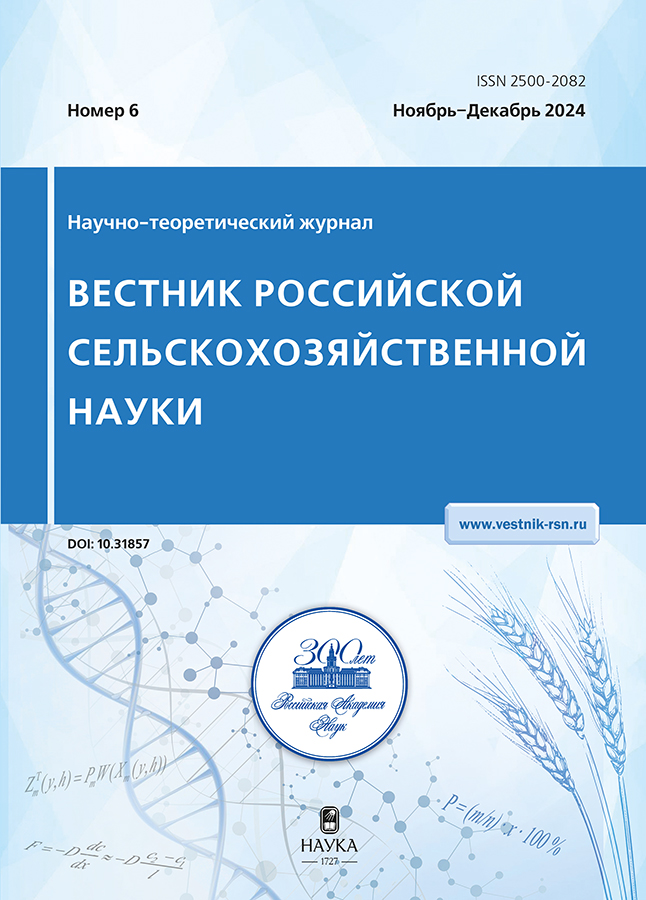Content of Sugars and Organic Acids in Fruits of Introduced Varieties of Peach and Nectarine in the Subtropics of the Krasnodar Region
- Authors: Abilfazova Y.S.1
-
Affiliations:
- Subtropical Scientific Centre of the RAS
- Issue: No 6 (2024)
- Pages: 52-55
- Section: Crop Production and Selection
- URL: https://vietnamjournal.ru/2500-2082/article/view/659225
- DOI: https://doi.org/10.31857/S2500208224060128
- EDN: https://elibrary.ru/WUBOYH
- ID: 659225
Cite item
Abstract
The article presents the data of biochemical analyses of a collection of some peach and nectarine varieties grown in the humid subtropics of Russia. The studies have been carried out in the Laboratory of Plant Physiology and Biochemistry of the Federal Scientific Center of the Russian Academy of Sciences since 2019. The purpose of the work is to identify the biochemical features of introduced peach and nectarine varieties varietal-rootstock combinations that are resistant to adverse weather and climatic conditions of the Black Sea coast, characterized by stable yields of fruits with high taste qualities for a long fresh products line. The object of study is peach varieties with clonal scion BP of different ripening periods: Friday 13 (early), Redhaven (control), Pamyat Simirenko, Osenniy Rumyanets (medium); nectarines – Obilny, Orion, Silver Roma (late). The peaches and nectarines fruit pulp is rich in sugars, organic acids, macro- and microelements, enzymes, vitamins, among which ascorbic acid, as an antioxidant, attracts the greatest attention of scientists. It was found that the total amount of sugars on average in the experiment was 8.50–10.90 g/100 g. Among the sugars in the fruits, sucrose content was predominant – 8.10–9.40 g / 100 g in peach (Pamyat Simirenko, Redhaven, Osenny Rumyanets, Pyatnitsa 13), the minimum – 5.80–6.8 g / 100 g, in nectarines (Obilny, Orion, Silver Roma). A low content of dry matter was noted on average 11.12–14.25%, of organic acids, the largest amount of tartaric, malic, ascorbic acids from 7.22 to 11.92 mg%. The Redhaven, Obilny, Orion, Silver Roma varieties have the highest amount of vitamin C (8.00–11.92 mg%), the minimum (7.22–7.45 mg%) – Osennyy rumyanets, Pamyat Simirenko, which depended on the varieties, their ripening time and abiotic factors of the natural environment of the region.
Full Text
About the authors
Yu. S. Abilfazova
Subtropical Scientific Centre of the RAS
Author for correspondence.
Email: Citrus_Sochi@mail.ru
ORCID iD: 0000-0002-7603-3592
PhD in Biological Sciences, Senior Researcher
Russian Federation, SochiReferences
- Abil’fazova Yu.S. Ocenka kachestva plodov raznyh sortov persika v usloviyah Sochi // Subtropicheskoe i dekorativnoe sadovodstvo. 2018. № 67. S. 137–141.
- Bahteev F.H. Vazhnejshie plodovye rasteniya. M.: “Prosveshchenie”, 1970. 351 s.
- Eremin G.A. Selekcionnoe uluchshenie persika i nektarina v Krasnodarskom krae // Nauch. zhurnal. KubGAU. 2010. № 63.
- Mursalimova G.R., Hardikova S.V., Shamraev A.V. Soderzhanie askorbinovoj kisloty v plodah yabloni raznyh privojno-podvojnyh kombinacij v prirodno-ekologicheskih usloviyah Orenburgskoj oblasti // Plodovodstvo i yagodovodstvo Rossii. 2018. № 55. S. 129–132. https://doi.org/10.31676/2073-4948-2018-55-129-132.
- Pochinok H.N. Metody biohimicheskogo analiza rastenij. Kiev: Naukova dumka, 1976. S. 39–178.
- Programma i metodika sortoizucheniya plodovyh, yagodnyh i orekhoplodnyh kul’tur / Pod red. E.N. Sedova i T.P. Ogol’covoj. Orel: VNIISPK, 1999. 608 s.
- Ryndin A.V., Lyah V.M., Smagin N.E. Kul’tura persika v raznyh stranah mira. Subtropicheskoe i dekorativnoe sadovodstvo. 2016. № 57. S. 9–24.
- Smagin N.E., Abil’fazova Yu.S. Bespreryvnyj konvejer sozrevaniya plodov persika // Vestnik rossijskoj sel’skohozyajstvennoj nauki. 2015. № 6. S. 49–51.
- Chivilev V.V., Kruzhkov A.V., Kirillov R.E., Kulikov V.N. Ocenka zasuhoustojchivosti sortov i form grushi, vishni, chereshni i abrikosa // Vestnik sovremennyh issledovanij. 2019. № 1,2 (28). S. 115–117.
- Shajtan I.M., Chuprina L.M., Anpilogova V.A. Biologicheskie osobennosti i vyrashchivanie persika, abrikosa i alychi. Kiev: Naukova Dumka, 1989. S. 6 – 154.
- Abilfazova Yu., Belous O. Evaluation of the functional state of peach varieties (Prunus persica Mill.) when exposed hydrothermal stress to plants // Potravinarstvo Slovak Journal of Food Sciences. 2018. Vol. 12. No. 1. P. 723–728. https://doi.org/10.5219/974.
- Basharat Y., Khalid G., Ali Abas W., Preeti S. Health Benefi ts of Anthocyanins and Th eir Encapsulation for Potential Use in Food Systems: A Review // Crit. Rev. Food Sci. Nutr. 2016. V. 56. P. 2223–2230.
- Belous O., Abilphazova Yu. Peach Culture in the Humid Subtropics of Russia: A Biochemical Aspect. In book: Prunus persica: Production, Nutritional Properties and Health Effects (Agricultural Research Updates). Nova Science Publishers, Inc., USA. Ch. 4. P. 234–240. 2021.
- Cociu V., Hough L.F., Ionescu P.M., Topor E. Results on breeding new very early and early ripening peach and nectarine varieties // Acta Horticulture. 1985. V. 173. P. 25–30. https://doi.org/10.17660/ActaHortic.1985.173.3.
- Grosso G., Bei R., Mistretta A. et al. Eff ects of Vitamin C on health: a review of evidence // Front Biosci., 2013. No. 18. Р. 1017–1029.
- Legua P., Daz Mula H.M. et al. Quality, bioactive compounds and antioxidant activity of new flat-type peach and nectarine cultivars: a comparative study // Journal of Food Science. 2011. Vol. 76. Is. 5. P. 729–735.












